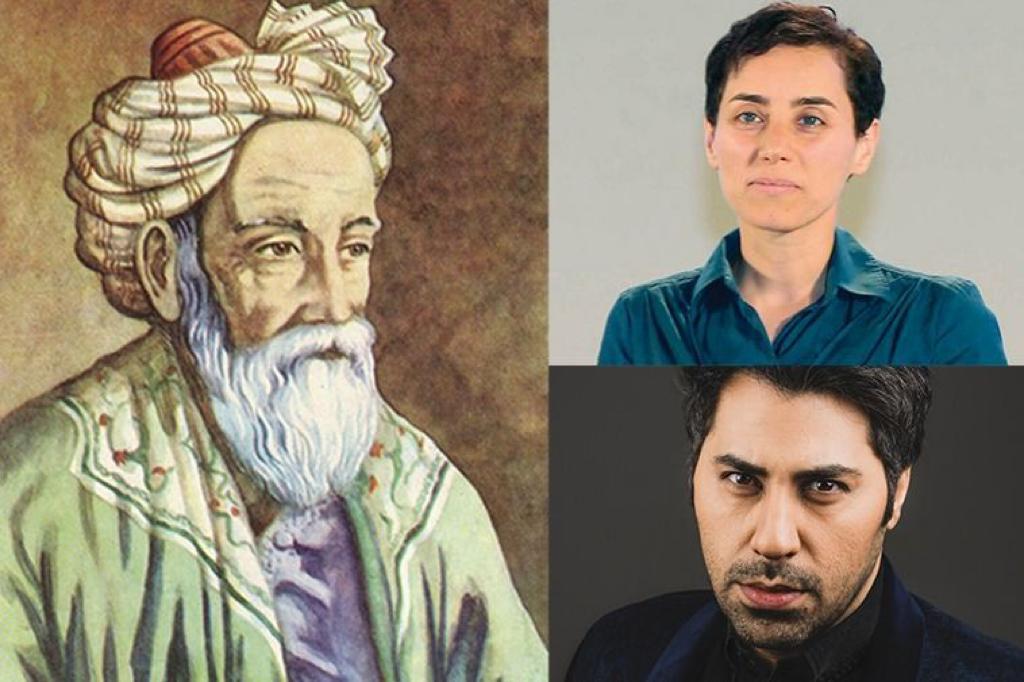Omar Khayyam was a Persian polymath, astronomer, writer, poet, and mathematician who was well-known in Iran for his contributions to science. His outstanding work is known to English-speaking readers thanks to Edward FitzGerald’s translation of his collection of hundreds of quatrains (or rubais) in Rubaiyat, an 1859 work on “the Astronomer-Poet of Persia.”
Khayyam was born on May 18th, 1048 in Nishabour, Persia (modern-day Iran). He is thought to have been the son of a tent-maker, as his name, al-Khayyam.
He authored books on music, arithmetic, and mathematics before he was 25 years old, demonstrating his versatile mind. During the Seljuk era, Khayyam was summoned to Isfahan to erect a new observatory under Sultan Malik-Shah.
He headed a team of scientists for 18 years that created a star map and determined the duration of the solar year to such precision that it loses only one day every 5,000 years—much more precise than the Gregorian calendar, which loses a day every 3,330 years. He contributed to the development of the Jalali calendar, a precursor of Iran’s contemporary calendar, by using these calculations.
In the field of maths, the immensely influential mathematical treatise ‘Treatise on Demonstration of Problems of Algebra,’ which Khayyam completed in 1070, is one of his most famous works. This dissertation emphasized the fundamental algebraic principles that were eventually transferred to Europe.
With his work on triangular arrays of binomial coefficients, he established the groundwork for Pascal’s triangle. In 1077, Khayyam published another major book, ‘Sharh ma ashkala min musadarat kitab Uqlidis,’ which means ‘Explanations of the Difficulties in the Postulates of Euclid.’ It was titled “On the Difficulties of Euclid’s Definitions” in English.
In the world of literature, Khayyam is well-known for his quatrains. Bernard Quaritch, a London bookseller, published the first edition of Omar Khayyám’s Rubáiyát in 1859. No copies were sold, and the booklet wound up in Quaritch’s remainder box in 1861, where it was sold for a penny apiece.
No copies were sold until 1861, when Whitley Stokes, a Celtic scholar, purchased one. He returned to buy more copies, one of which he gave to Dante Gabriel Rossetti. From there, the book passed through several hands until it was introduced in America by Charles Eliot Norton (1827-1908), a renowned scholar and man of letters. Mrs. Georgiana Burne-Jones showed him her husband’s copy of the Rubáiyát. when he visited England in 1868.
Norton obtained a copy of the second FitzGerald edition (1868) and shared it with American friends such as James Russell Lowell and Ralph Waldo Emerson. He published a laudatory article in the North American Review in 1869. The article piqued the interest of many fellow Americans as well as readers in England. Many people desired a copy of the poem. This was the beginning of a period known as the “Omar craze.”
Particularly in the United States. Potter’s Bibliography, published in 1929, contains not only a long list of books and articles about Omar Khayyam, but also an enumeration of him in various arts and commercial advertisements: music, drama, films, dances, bookplates, and also tobacco, cigarettes, coffee, chocolate, perfume, soap, pottery, postcards, and crossword puzzles, all of which derive their name and appeal from the old Persian poet. This didn’t last long and in the 1920s, the Omar Khayyam craze began to fade.
Today’s Iran is not the same as the one where Khayyam lived, but the love of armature astronomy and literature is still alive and well among the current generations. Despite this, Iran lacked a professional modern observatory until recently. The same can be said about Khayyam literature.
The younger generation of Iranians is unfamiliar with Khayyam. Iran has gone through many changes in the last six decades, including the longest war since the 1990s. In the midst of all of this, there have been attempts to return to the roots of culture and re-center poets such as Khayyam. Amir Hossein Nouri is one of the artists who has attempted to promote Khayyam’s poetry through the use of a mix of his music.
Amir Hossein Nouri, a 36-year-old Iranian artist, has won 40 international awards in less than a year across three continents: America, Europe, and Asia. He is a well-known international singer, composer, and human rights activist, particularly in the field of children’s rights. In his most recent track, “Nirvana,” he combines modern and traditional Iranian music with poetry by Omar Khayyam.
Khayyam’s way has been persuaded in other fields as well, and Khayyam’s homeland has always been a source of contribution to science and culture whenever and wherever it could. World-renowned mathematician and Stanford University professor of mathematics Maryam Mirzakhani (1977-2017) is one of those examples.
Mirzakhani rose to prominence as a mathematician after earning a BSc in mathematics from the Sharif University of Technology in Tehran in 1999. She is the first woman to win the Fields Medal prize. Her research topics included Teichmüller theory, hyperbolic geometry, ergodic theory, and symplectic geometry.
For many generations, Khayyam has been a source of inspiration, and it appears that he will continue to be so in the future. It’s amazing how the poetry of a guy who lived 1100 years ago still resonates with us now. It is a testament to our interconnectedness across time and how, despite the passage of time, we still face comparable questions about the essence of our lives.
Check this out to:
https://www.youtube.com/watch?v=AuvdN1_INj8
This is a Contributor Post. Opinions expressed here are opinions of the Contributor. Influencive does not endorse or review brands mentioned; does not and cannot investigate relationships with brands, products, and people mentioned and is up to the Contributor to disclose. Contributors, amongst other accounts and articles may be professional fee-based.

